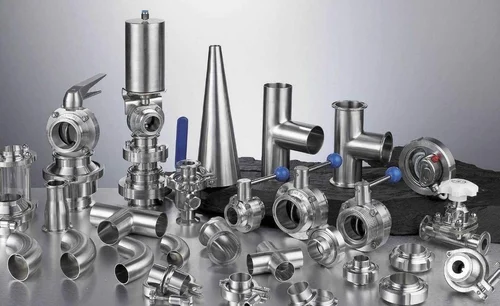- Get Free Quotes
- +91 99209 06048
- +91 22675 21290
- [email protected]
What Are Stainless Steel Pipe Fittings?

Stainless steel pipe fittings are considered the most significant plumbing and industrial piping systems elements for connecting, diverting, or controlling fluids. Being highly durable in nature, corrosion-resistant, and strong, stainless steel achieves absolute preference in the processes that include severe conditions, such as chemical processing and oil-gas industries, food production, and water treatment.
Types of Stainless Steel Pipe Fittings
Stainless steel pipe fittings come in various types, each suited for specific functions within a piping system. Here are some commonly used types:
- Elbows – These are used to change the direction of flow, typically by 45 or 90 degrees.
- Tees – Allow the pipe to branch off in three directions, commonly in T-shaped designs.
- Reducers – Connect pipes of different diameters, aiding in adjusting flow rate or pressure.
- Couplings – Join two pipes together, often with an internal thread.
- Caps and Plugs – Used to close off pipe ends temporarily or permanently.
More to read : Types of Pipe Fittings: A Comprehensive Guide
Why Choose Stainless Steel for Pipe Fittings?
Stainless steel offers several benefits for pipe fittings:
- Corrosion Resistance: Its high chromium content protects against rust, even in moisture-laden environments.
- Durability: Stainless steel withstands high pressure and temperature changes without cracking or deforming.
- Hygiene: Non-porous surface makes it ideal for food and pharmaceutical industries.
- Easy Maintenance: With minimal maintenance, stainless steel fittings have a long lifespan, lowering replacement costs over time.
Applications of Stainless Steel Pipe Fittings
Given their versatility, stainless steel pipe fittings are widely used in:
- Water treatment plants for their resistance to corrosion and scaling
- Food and beverage processing due to hygienic properties
- Chemical and petrochemical industries where exposure to high temperatures and reactive substances is common
- Marine applications due to exposure to seawater and harsh weather
Selecting the Right Fitting
Factors to consider in the choice of stainless steel fittings, however, include pressure requirements, temperature, and pipe diameter, among others. The most common grades are 304 and 316 stainless steel, and while they vary in different levels of corrosion resistance, the latter is fit for any form of chloride-heavy environment.
Advantages Over Other Materials
This is one reason why stainless steel can be more reliable than other types of materials, such as plastic or brass, as it lasts much longer and has less leakage. Because of this durability, it can also prove to be an economical investment over a period compared to other materials that will degrade quite quickly when they are used in harsh environments.










